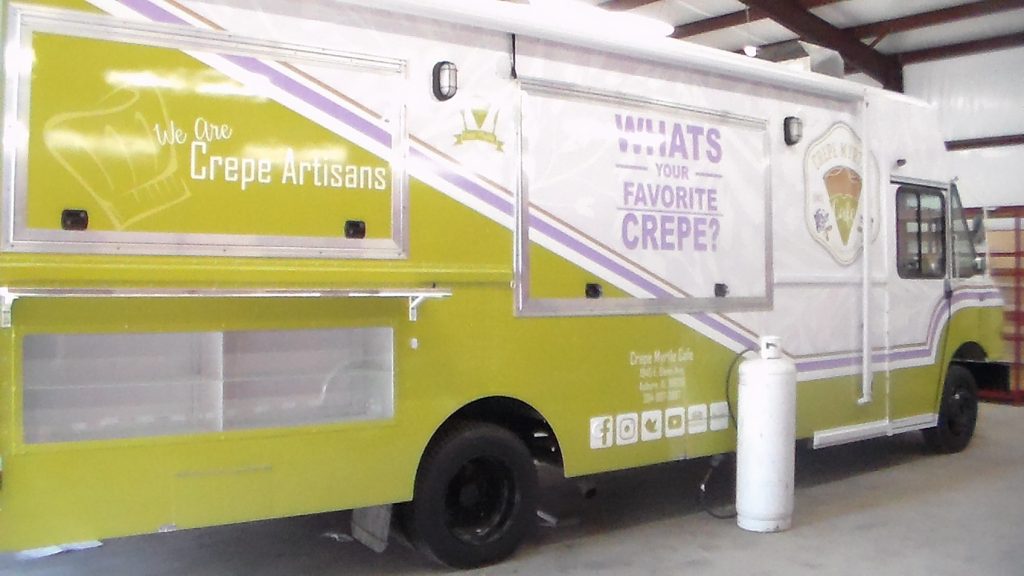Are you required to get a Commercial Driver’s License or CDL if you drive a food truck? In most situations, you don’t need a CDL to operate a food truck. A standard Class D driver’s license issued by the state you live is sufficient to legally drive and operate a food truck.
There are of course always exceptions to this general guideline. We will spend the rest of the post exploring some of the rare situations where you might actually need a CDL to drive a food truck. If you’re unsure, make sure you contact the Department of Motor Vehicles in the state you plan to operate for more information and guidance. Requirements for CDLs vary slightly from state to state so it’s important to understand the local laws.

Built by M&R Specialty Trailers and Trucks.
Rare Situations You Would Need a Food Truck CDL
Weight: If you plan to operate a food truck with a gross combined weight rating (GCWR) 26,001 pounds or more then you will need to obtain a CDL. The total weight of a unit includes the mobile kitchen equipment and employees that are expected to be on and operate the unit.
Although food trucks are heavy, a typical food truck won’t come close exceeding the 26,001 pound weight limit. Since the weight of a food truck is dependent on the size of the unit and equipment installed the final weight will vary. But based on our experience a typical food truck will weigh 12,000 – 16,000 pounds. You find food truck weight estimates for trailers, food trucks, and food buses in our previous post.
If you plan to convert a school bus into food bus, you’ll want to keep weight considerations in mind and may actually need a CDL. Depending on the type of school bus you acquire it may fall under or over the weight requirement depending on the size. Some larger school buses weigh approximately 30,000 pounds when you include seating so this is a scenario where you might need to obtain a CDL.
If you have a food trailer that you plan to tough to events that is over 10,000 pounds, a CDL will also be a requirement. Even large 22″ food trailers weigh about 8,000 pounds so most vendors will fall well below the threshold.
Passengers: You are required to obtain a CDL regardless of vehicle size if you plan to transport 16 people or more. This 16 person limit includes the driver.
In our decade and a half experience manufacturing food trucks, we’ve never built a food unit for someone that intended to transporting more than 16 people. When you get more than five people working inside a larger sized food truck, you’ll hit a threshold where there are literally too many cooks in the kitchen to operate comfortably.
The Final Word
Bottom line, most food truck owners don’t have a commercial driver’s license (CDL). Odds are you won’t need one either if you don’t fall into one of the rare scenarios listed above. If you want to learn more about the CDL process, check out the informative resources below:
Who Is Required to Get a CDL? This piece is published on TruckingTruth.com and outlines in plain English who is required to obtain a CDL. The piece also explains the exceptions for individuals working on farms or driving an RV.
CDL Class Types: Learn about the different class types for CDL driver’s licenses.
